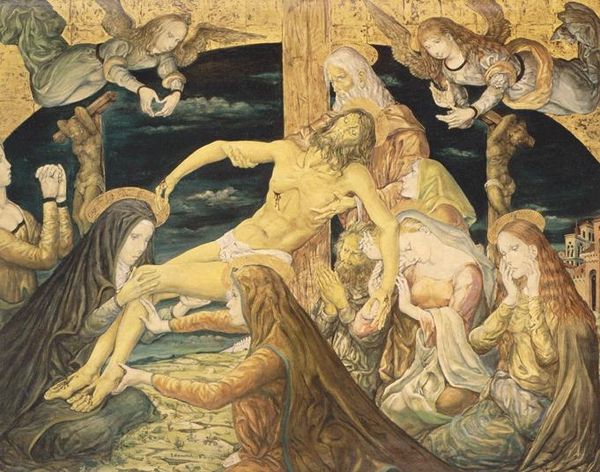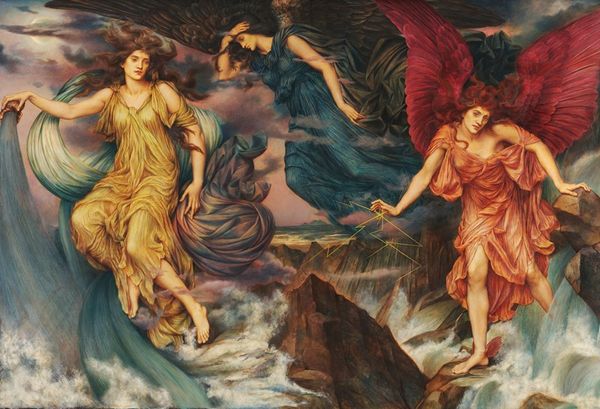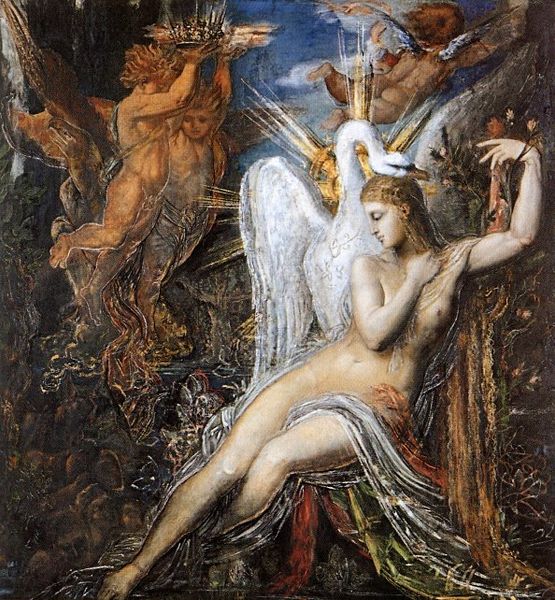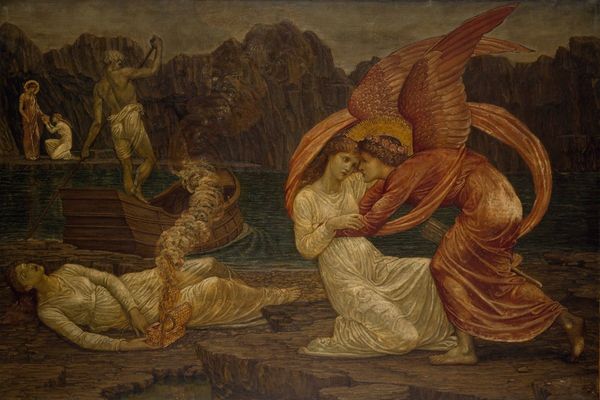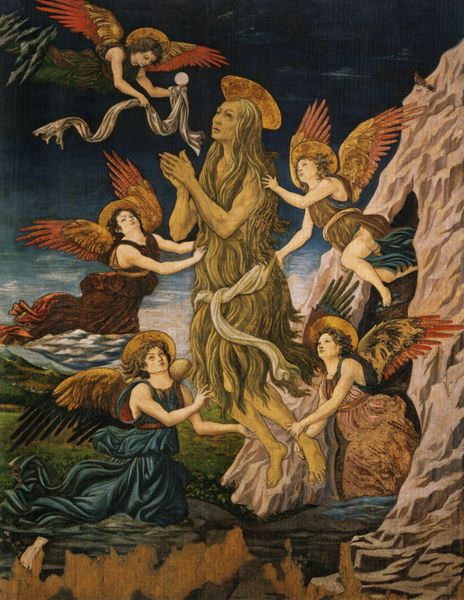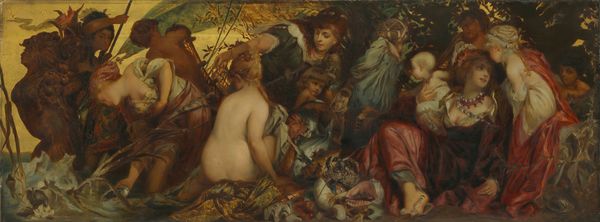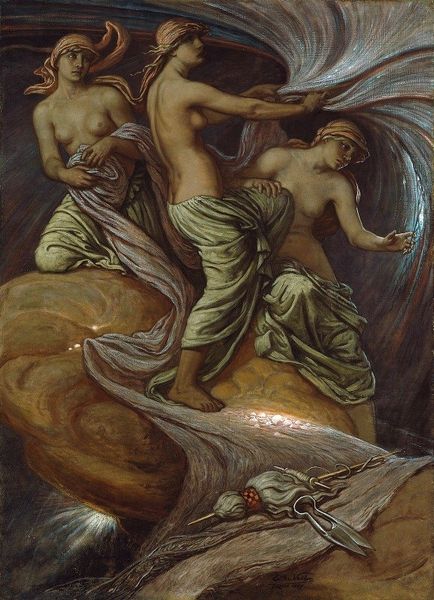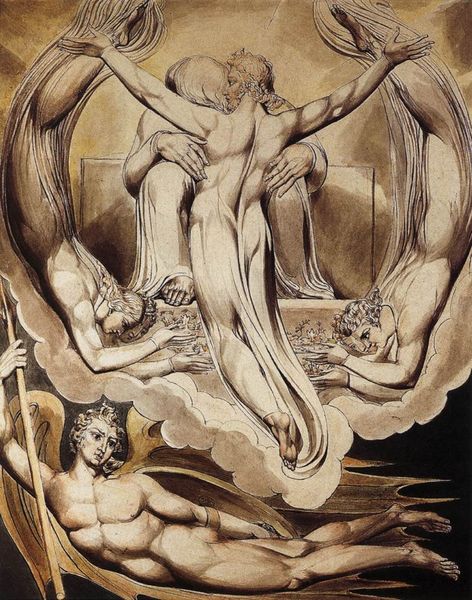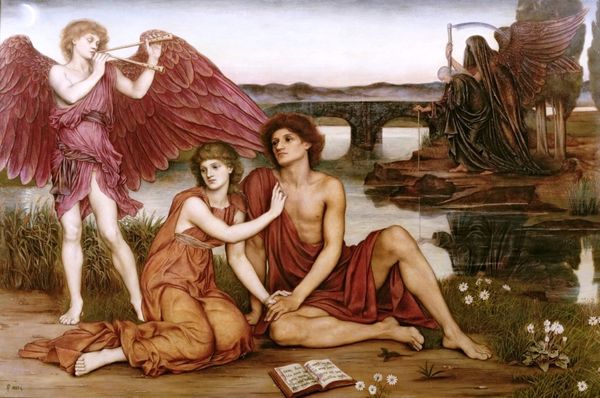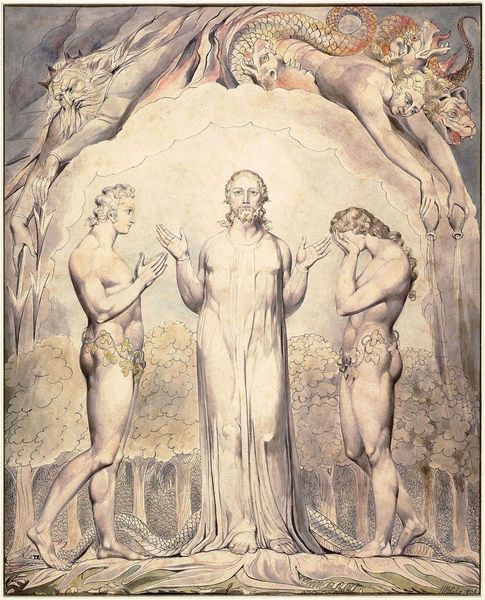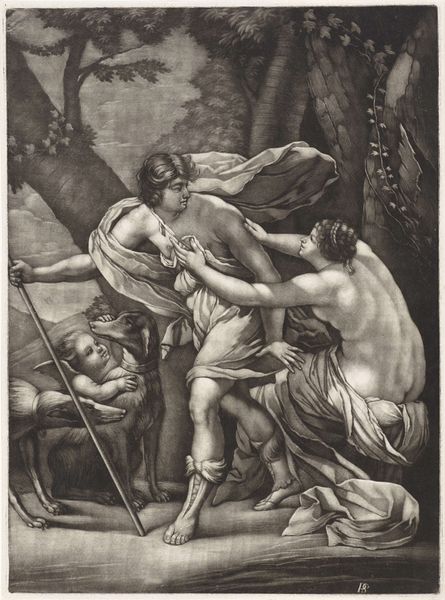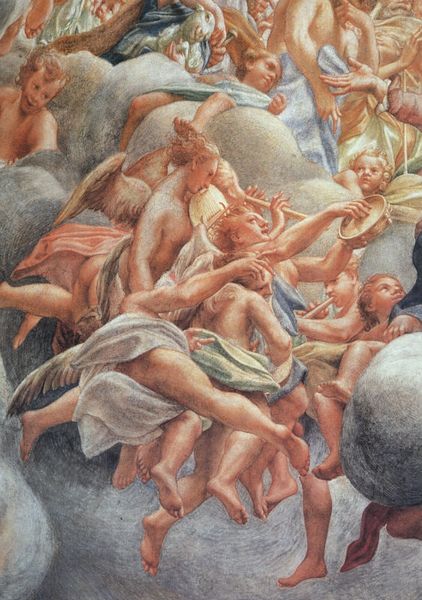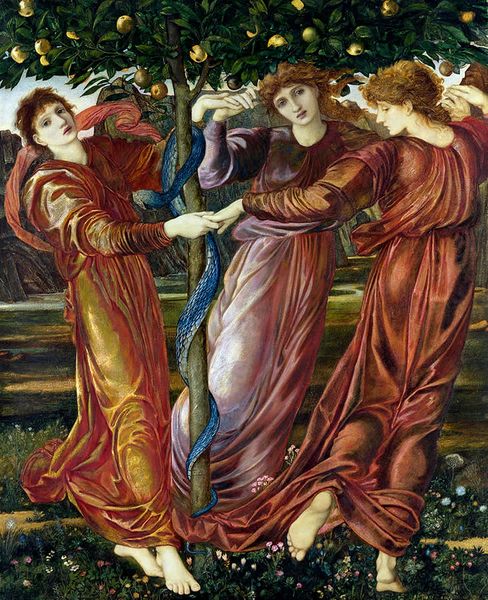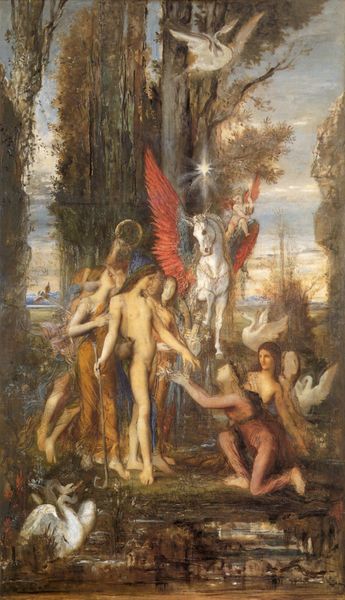
Copyright: Public Domain: Artvee
Editor: This is Edward Burne-Jones’s *Cupid’s Hunting Fields*, painted in 1885 using oil on canvas. It strikes me as quite dreamlike, almost like a tapestry. What's your take on this artwork? Curator: What I find interesting is Burne-Jones's clear reference to earlier production. His meticulous layering of oil paint mimics the appearance and effect of woven textiles. By deliberately flattening the space and emphasizing surface pattern, he effectively merges the traditional hierarchies between painting and the applied arts. Notice how the gold details, almost like threads, create a shimmering, decorative field. Where does this positioning of "painting as craft" lead your understanding of the subject matter? Editor: So, it's less about the mythological narrative and more about how it was made? Does this relate to labor? Curator: Precisely! Consider the repetitive, almost mechanical nature of weaving. The figures, particularly Cupid, become like elements in a decorative pattern, their individual agency diminished by the overall design. His labour involved a whole system of studios. Burne-Jones even relied on workshops similar to that of William Morris. Do you see any of that here? Editor: Now that you mention it, the figures *are* a bit repetitive. The same models, similar poses, but repeated across the composition...It seems to imply that Burne-Jones uses bodies as materials! Curator: Exactly! And if bodies can be treated as material, how might that extend into contemporary dialogues regarding industrial and digital means of creating similar figurative forms, with potentially different socio-political ramifications? Editor: This perspective shifts the whole viewing experience for me, thinking about production, materiality, and labour challenges the dominance of the narrative itself! I never would have noticed it without this materialist context. Curator: Agreed, considering the materials used and their manipulation makes visible how "high art" draws from traditionally denigrated labor, making visible some core tenets of Pre-Raphaelite thinking.
Comments
No comments
Be the first to comment and join the conversation on the ultimate creative platform.
